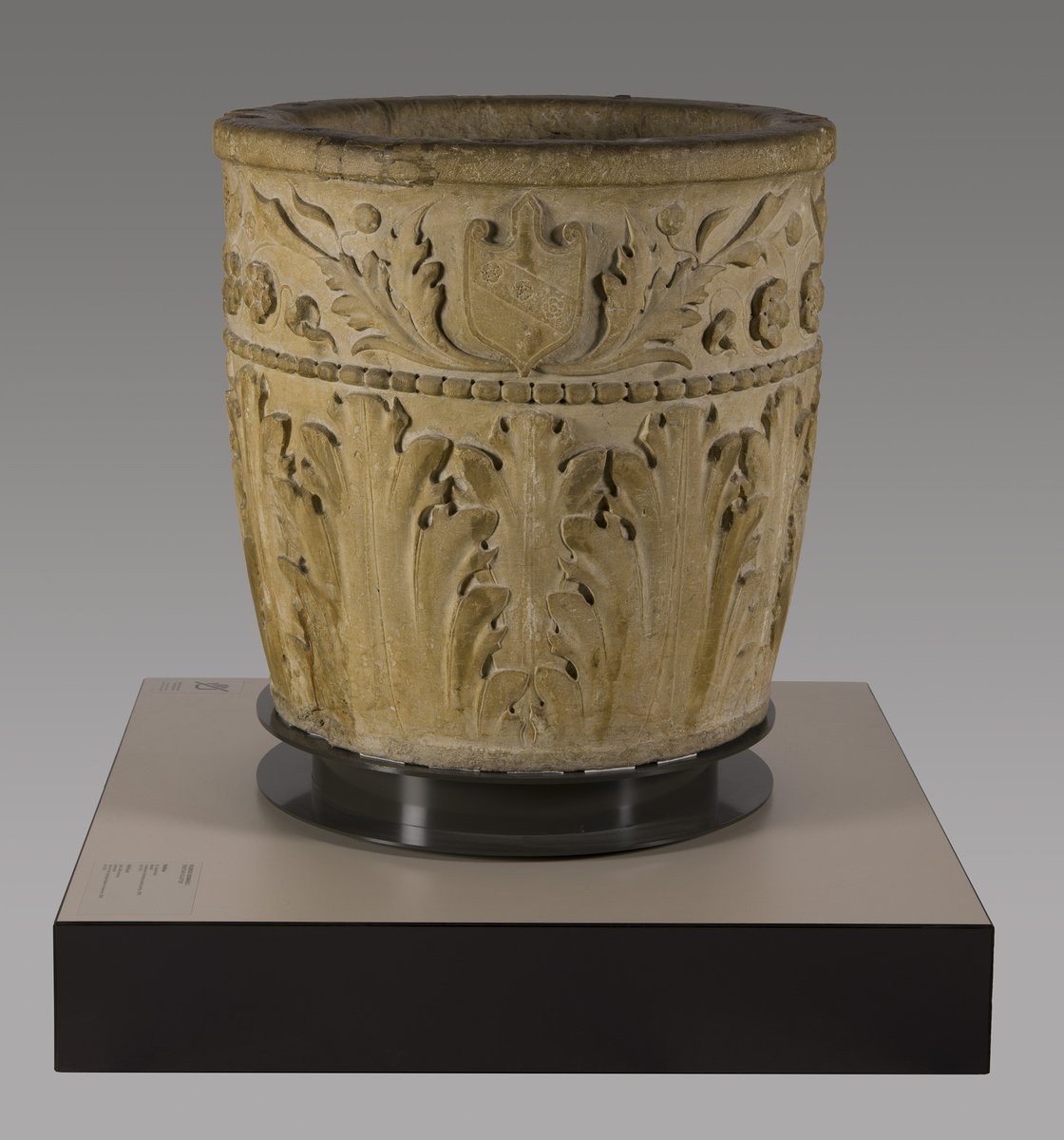
Wellhead
Sculptures
| Artist | |
|---|---|
| Culture | Italian |
| Date | second half of the 14th century |
| Object type | sculpture |
| Medium, technique | painted limestone |
| Dimensions | 176 × 80 × 56 cm, 597 kg |
| Inventory number | 1434 |
| Collection | Sculptures |
| On view | Museum of Fine Arts, Ground Floor, Renaissance Hall |
In the Italian art of the fourteenth century, alongside ceremonial and formal representations of the enthroned Virgin and Child, there was a growing trend for more intimate portrayals that emphasised the Virgin’s motherhood, with Mary turning her head towards the infant in her lap. The Budapest statue belongs in this second group, based on the position of Mary’s head, as reconstrued during the restoration process. Seated on the Virgin’s knee and dressed in a mantle, the infant Jesus holds a book in his left hand, while his right hand is raised as if in blessing. Based on compositional parallels, Mary’s left hand, which is missing, may have been holding fruit. The sculpture, which was once regarded as a fifteenth-century Umbrian work, is more likely – in view of its composition and the soft and generous moulding – to have been made in Venice in the second half of the fourteenth century.
Balogh, Jolán, Katalog der ausländischen Bildwerke des Museums der bildenden Künste in Budapest, IV – XVIII. Jahrhundert: 1. Textband Bd. 1, Akadémiai Kiadó, Budapest, 1975, p. 50., no. 39.
Szmodisné Eszláry, Éva, A Régi Szoborgyűjtemény kincsei, Szépművészeti Múzeum, Budapest, 1994, p. 13.
Szmodisné Eszláry, Éva, The treasures of the Old Sculpture collection, Szépművészeti Múzeum, Budapest, 1994, p. 13.
This record is subject to revision due to ongoing research.